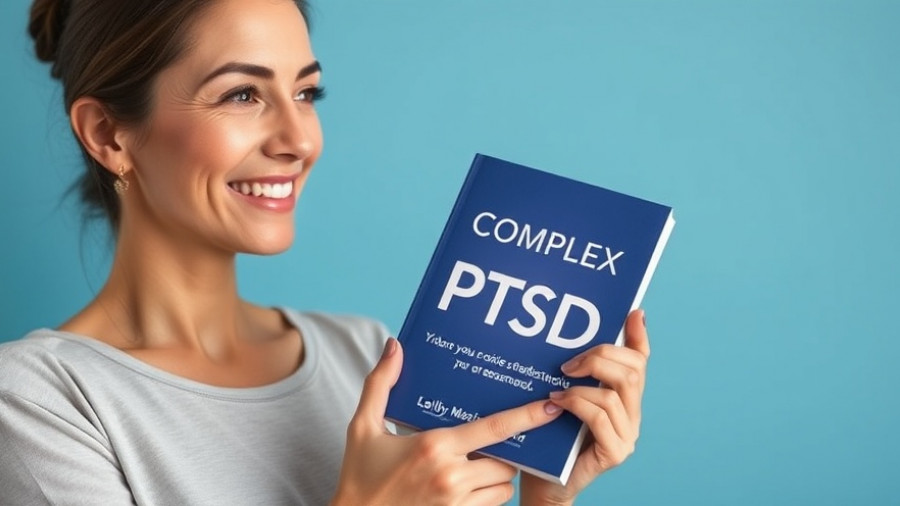
Understanding Trauma: A Critical Aspect of Mental Health
Trauma is a pervasive issue that significantly impacts mental health, often leading to disorders such as PTSD, depression, and anxiety. The implications of untreated trauma are extensive, shaping not only individual well-being but also societal health dynamics. Professionals in the mental health field must grasp the profound effects trauma has and should be equipped with effective strategies to aid recovery. The discussion surrounding this topic gained momentum recently with insights from the video, The 5 Biggest Mistakes People Make When Healing Trauma, which highlights common pitfalls individuals encounter during their healing journey.
In The 5 Biggest Mistakes People Make When Healing Trauma, the discussion dives into common errors individuals encounter on their healing journey, exploring key insights that sparked deeper analysis on our end.
Common Misconceptions About Healing Trauma
One of the most significant barriers to effective trauma recovery is the myriad misconceptions surrounding mental health treatment. It's essential to dismantle the stigma attached to trauma, which often perpetuates the belief that one must 'just get over it' or that seeking help is a sign of weakness. Such myths can discourage individuals from seeking therapy or utilizing resources available to them. Furthermore, many individuals believe that time alone can heal psychological wounds, but without adequate support and intervention, trauma can manifest in lasting psychological distress and co-occurring disorders.
The Value of Trauma-Informed Care
Implementing trauma-informed care strategies is instrumental in addressing the unique needs of trauma survivors. This approach fosters an environment of safety and trust, promoting emotional security and resilience. Mental health professionals, including therapists, psychologists, and counselors, must understand the distinctive needs of trauma survivors to facilitate healing effectively. Techniques such as Cognitive Behavioral Therapy (CBT) and Dialectical Behavior Therapy (DBT) have shown efficacy in providing trauma survivors with coping strategies and emotional regulation skills. By utilizing these evidence-based modalities, practitioners can better support their clients in overcoming the psychological challenges trauma presents.
Identifying and Avoiding Self-Sabotaging Behaviors
A significant mistake many individuals make when healing trauma is engaging in self-sabotaging behaviors. These actions can include substance abuse, avoidance, or negative self-talk, which detrimentally impact progress. Recognizing these patterns is crucial for professionals and clients alike, rendering it necessary for therapists to proactively address these behaviors in their treatment plans. Self-care strategies, such as mindfulness and stress management techniques, can provide individuals with healthy outlets for emotional expression and coping, ultimately promoting mental wellness.
Emphasizing the Need for Support Systems
Another prevalent mistake is the isolation that often accompanies trauma. Many individuals retreat from their social circles, leading to diminished support systems. Research underscores the importance of community and connection in healing processes. Mental health professionals should encourage clients to engage in support groups or family therapy. This not only alleviates feelings of loneliness but also fosters shared understanding and empathy, bolstering the healing experience.
The Importance of Professional Guidance
While self-help strategies can facilitate progress, professional guidance remains a cornerstone of effective trauma treatment. Mental health professionals possess knowledge of various therapeutic techniques and can tailor approaches to meet individual needs. Additionally, addressing underlying mental health conditions such as anxiety or depression concurrently with trauma treatment can enhance overall outcomes and provide a comprehensive healing experience.
Conclusion: Moving Forward with Awareness and Action
In summary, the journey towards trauma recovery is profoundly complex and necessitates an understanding of the various mistakes that can hinder progress. Awareness of these potential pitfalls and employing a structured, informed approach can vastly improve recovery trajectories for trauma survivors. It is imperative for professionals in the mental health arena to continue advocating for trauma-informed care while engaging in continuous education about the latest research and treatment methodologies. Knowing these critical elements can help create a more resilient and supportive path for those healing from trauma.
Are you interested in learning more about trauma and enhancing your skills as a mental health professional? Explore our resources on trauma-informed care and continue to foster awareness and treatment strategies to effectively support your clients.
 Add Row
Add Row  Add
Add 




Write A Comment